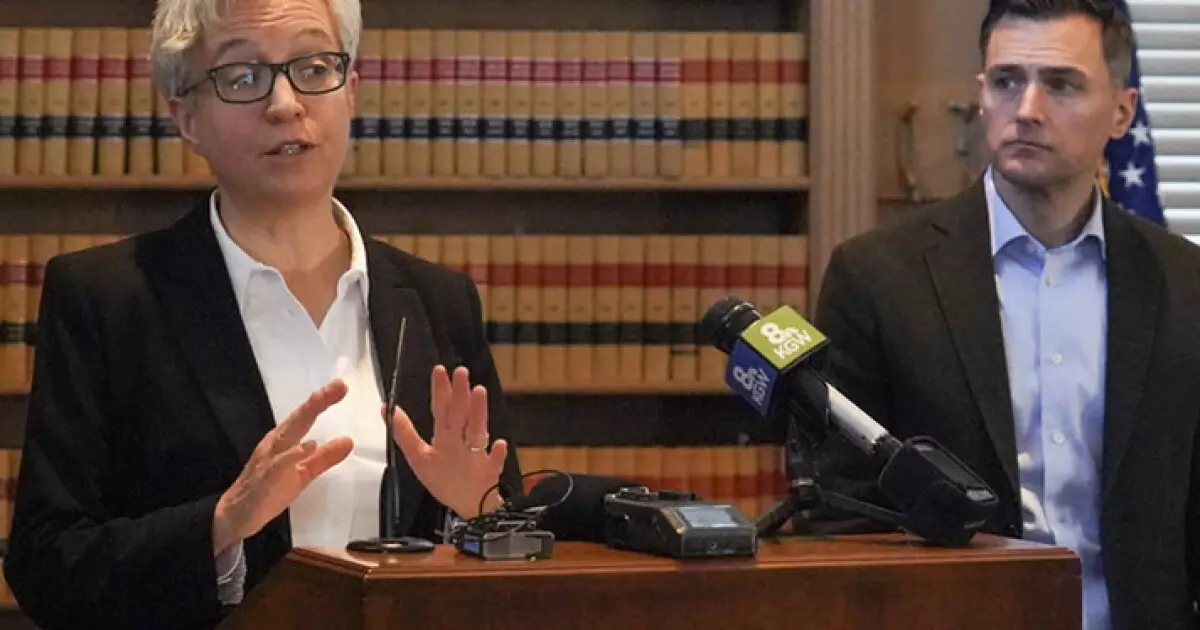Oregon’s transportation infrastructure, once the backbone of the state’s economy and safety, stands on the brink of collapse—not due to natural disaster, but from a legislative failure. The recent wave of layoffs at the Oregon Department of Transportation (ODOT) exposes a lesson in political shortsightedness and the dangers of neglecting essential public services. While policymakers dithered over a vital transportation funding package, they inadvertently compromised the safety, efficiency, and economic vitality of Oregon for years to come. This is not merely a budgetary oversight; it’s a serious failure of leadership that prioritizes political posturing over the well-being of Oregonians.
The refusal to approve a $14.6 billion transportation package—after prolonged negotiations—demonstrates a troubling disconnect between legislative deliberation and practical governance. With each month delayed, the cumulative impact is disastrous: hundreds of workers losing their livelihoods, roads deteriorating rapidly, wildfire prevention efforts weakening, and the potential for catastrophic accidents rising. The stark truth is that this failure is political in origin, and its consequences will be felt most acutely by the everyday citizen who depends on well-maintained roads, fire risk mitigation, and reliable winter services.
The Immediate Human Toll and Systemic Collapse
The first wave of layoffs—483 employees—turned into a harbinger of broader systemic failure. Maintenance crews, support staff, and critical operational personnel are now being sent home, effectively crippling the department’s ability to respond swiftly to Oregon’s diverse needs. These are the workers who fill potholes, clear brush, and maintain vital infrastructure—activities that form the fabric of everyday safety.
Even more troubling is the elimination of 449 vacant positions, totaling nearly a thousand jobs wiped out in a single stroke. This isn’t just an economic blow; it’s a gamble with public safety. The cuts threaten to derail ongoing construction projects and delay regular maintenance, inevitably leading to increased accidents, deteriorating roads, and heightened wildfire risks. The damage is not merely financial; it’s tangible, measured in lives and safety standards.
The projected winter of 2025-2026 looms like a dark cloud—more layoffs, fewer snowplows, delayed de-icing, and increased hazard potential. Rural and mountainous communities will be hardest hit, left with diminished capacity to manage snow and ice. This creates an unacceptable scenario: roads that are impassable or deadly during the most perilous season, all because of political inaction.
Political Calculations Over Public Welfare
This crisis reveals the true cost of political zero-sum games. The legislative deadlock over House Bill 2025, which sought to fund Oregon’s transportation future through increased taxes and fees, underscores a broader ideological divide. The opposition’s failure to secure a supermajority stalled a vital initiative, effectively paralyzing the state’s ability to invest in itself. This isn’t simply about economics; it’s about leadership and responsibility.
Governor Tina Kotek’s stance—highlighting the preventability of this disaster—should serve as a wake-up call. Her call for a special session underscores the urgency, but it also exposes a fundamental failure: politicians prioritized political expediency over the essential services their constituents rely upon. The fact that the government’s plans to delay the inevitable are now coming at a cost of safety and economic stability is a damning indictment.
The reluctance to raise taxes—by those who claim to stand for fiscal conservatism—misses the point entirely. The real conservative approach is to prioritize security, efficiency, and future resilience. Underfunding transportation isn’t a free choice; it’s a reckless gamble that Oregon cannot afford.
Consequences of Serial Underinvestment
What makes this crisis so profound is the systemic underinvestment that has been happening for years. Holding vacancies open, delaying projects, and minimizing maintenance—these are all signs of a government that has consistently underspent on its core responsibilities. When a majority of the workforce is left vacant in “holding patterns” to manage costs, disaster looms. The current layoffs are but the tip of a much larger iceberg buried beneath years of neglect.
Oregon’s infrastructure isn’t just a question of convenience; it’s a matter of economic necessity and resilience. As wildfire seasons grow longer and more severe due to climate change, the ability to clear brush and maintain fire lanes is not a luxury—it’s critical. Yet, the current trajectory disregards this reality, favoring short-term political gains over long-term safety. This shortsightedness is a betrayal of trust and a dangerous precedent.
The rationale behind attempts to cut costs—such as reducing budgets for de-icing materials or delaying vehicle replacements—appears penny-wise but pound-foolish. These are essential safety measures that become prohibitively expensive when neglected. Oregon’s leaders need to recognize that investing now in robust transportation infrastructure and maintenance is the only way to prevent future costs—human and financial—from spiraling out of control.
In the end, Oregon’s transportation crisis offers a stark lesson: neglecting infrastructure in favor of political convenience is an unforgivable gamble. As winter approaches, residents will bear the brunt of this failures—a stark reminder that political stubbornness costs lives. The question isn’t whether Oregon will suffer, but how much damage will be done before there is political recognition that investment, not austerity, is the true path forward.


Leave a Reply